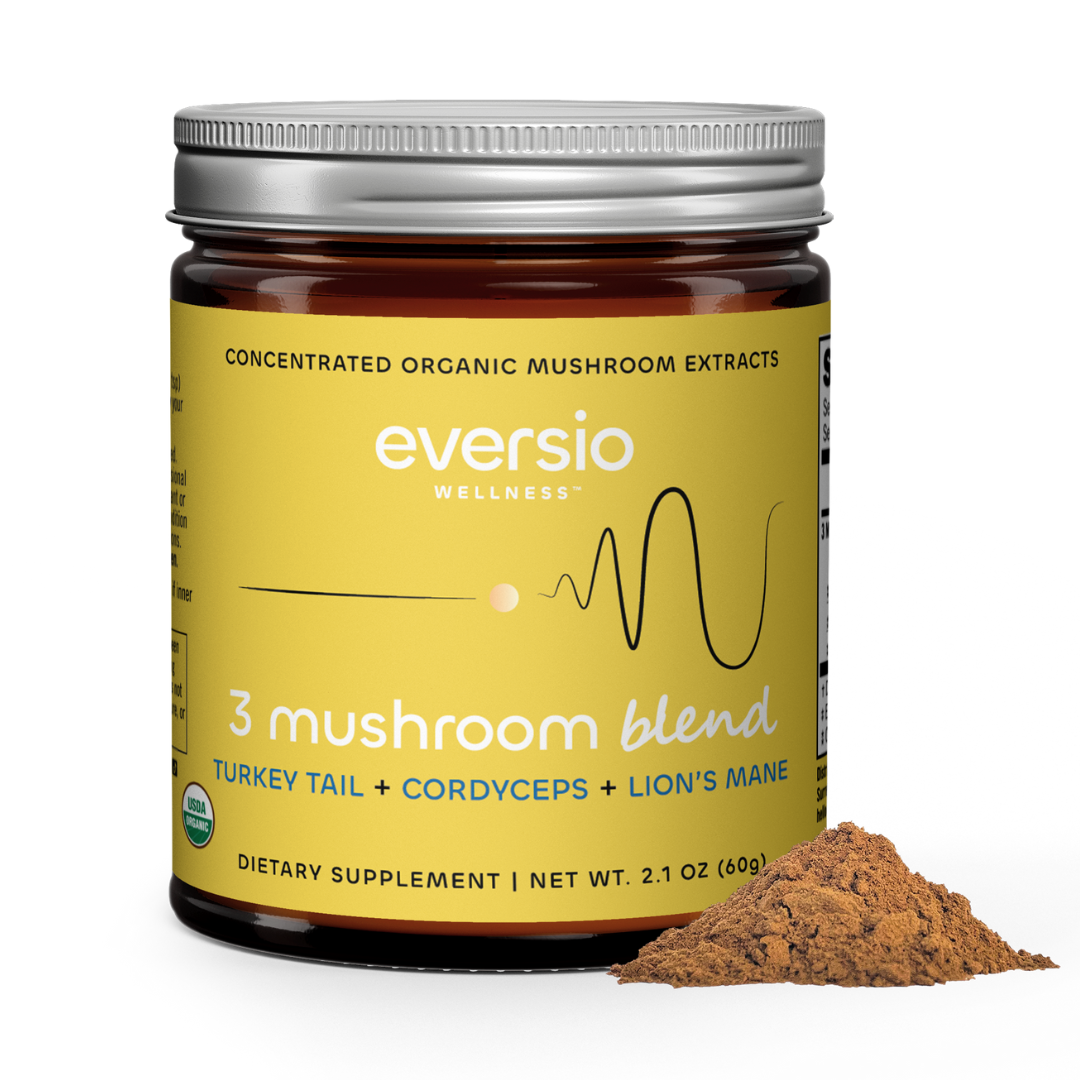April 2, 2024 | Dr. Silvana Jakupovic, ND
Red mushrooms captivate foragers with their vibrant colours, making them a standout group in the fascinating world of fungi. These eye-catching organisms adorn forest floors and add richness to the underbrush, playing crucial ecological roles while captivating observers with their beauty.
This mushroom guide explores several species of red mushrooms, shedding light on their identification, ecological significance, and cultural interpretations. The charm of these mushrooms is unmistakable, yet they present identification challenges, particularly in distinguishing safe-to-eat varieties from poisonous ones.
• What is the Significance of Red Mushrooms?
• Field Guide for Red Mushrooms
The Historical and Cultural Significance of Red Mushrooms
The connection between red mushrooms and human culture and history is profound, with their presence woven into various aspects, from ancient folklore to contemporary culinary practices. Notably, the iconic Amanita muscaria has been used in shamanistic rituals across different cultures and is believed to offer visions and spiritual enlightenment.
In European folklore, red mushrooms are symbols of magic and enchantment, often illustrated as the chosen seats of fairies and gnomes. Beyond folklore and myths, traditional healers have valued these mushrooms for their medicinal properties. However, today's scientific community remains cautious of their use due to the potential for toxicity. In the culinary sphere, select red mushroom varieties are prized for their distinct flavours and textures. However, discerning between edible and poisonous types remains a vital skill for foragers and culinary experts.
The Fascination with Wild Red Mushrooms
Mycology, the scientific study of fungi, unveils that mushrooms, distinct from plants, belong to the Fungi kingdom. They fulfill essential ecological functions as decomposers, breaking down dead organic matter to recycle nutrients back into the ecosystem. Unlike plants, mushrooms do not rely on photosynthesis but instead draw nutrients from their surroundings, including decomposing wood, living plants, and animals.
The part of the mushroom we commonly see, including the cap and stem, represents only a fraction of the organism. Beneath the surface, or embedded within its nourishment source, lies a vast network of mycelium—delicate threads that form the mushroom's true body. Identifying mushrooms, such as varieties with red caps, requires careful examination of their cap shape, colour, gill arrangement, spore colour, and environments. Given the wide variation in these characteristics, even within a single species, identification is a complex and intriguing part of studying fungi.
Field Guide to Identifying Red Mushrooms: Key Characteristics and Tips
Identifying red mushrooms involves recognizing several vital features unique to these striking fungi. Their vibrant red colour, ranging from deep crimson to bright scarlet, is the most noticeable trait. This bold coloration, a form of aposematism, is a natural deterrent, signalling potential predators that the mushroom may be toxic or unpalatable. The red pigments are more than aesthetic; they often signify the presence of specific chemicals that could be dangerous if consumed.
The surface texture of these mushrooms is another vital identifier. Variations include smooth and glossy caps in some species, while others may display a scaly or fibrous exterior. The Hygrocybe punicea, notable for its luminous red cap, exhibits a smooth, waxy texture, an essential characteristic for distinguishing similar species.
Furthermore, the habitat of red mushrooms provides valuable insights into their identification. Commonly found in wooded areas, these mushrooms establish symbiotic relationships with certain trees. The well-known Amanita muscaria, for instance, is often spotted beneath conifers and birch trees. Recognizing the preferred environments of different species not only aids in their identification but also guides enthusiasts and foragers on where to find these intriguing organisms.
Red Mushroom Varieties: Amanita muscaria (Fly Agaric)
Amanita muscaria, famously known as the Fly Agaric, stands out as a quintessential red mushroom, marked by its vivid red cap adorned with white spots. The cap's size varies between 8 to 20 cm across, starting as a dome shape and becoming flatter as the mushroom ages. These white spots are the remnants of a veil surrounding the mushroom during its early growth stages. It features a white stem, 5-20 cm in height, complete with a distinctive ring. Predominantly found in the temperate and boreal zones of the Northern Hemisphere, Fly Agaric thrives in pine and birch forests.
While its appearance might be bewitching, Fly Agaric is known for its psychoactive properties, containing substances like ibotenic acid and muscimol, which can induce hallucinogenic effects. It has a history of use in shamanic practices across various cultures. However, due to its toxicity, it is not suitable for culinary purposes.

Toxic Red Fungi: Russula emetica (The Sickener)
Russula emetica, aptly named The Sickener, is another prominent red mushroom, easily identified by its radiant red, convex cap that flattens and may sink at the center with maturity. The cap measures 3 to 11 cm in diameter. This mushroom has a white stem and gills that are white to cream in colour.
The Sickener is commonly found beneath pine trees in coniferous and deciduous forests across North America and Europe. True to its name, it is poisonous, leading to gastrointestinal upset if consumed. The flesh of The Sickener is brittle, a trait shared among many Russula species, and it emits a mild, somewhat fruity aroma.

Discovering Edible Red Mushrooms: Hygrocybe punicea (Crimson Waxcap)
The Crimson Waxcap, scientifically known as Hygrocybe punicea, is notable for its brilliantly red to orange cap that may turn yellow as it ages. The cap, which is conical or bell-shaped and ranges from 2 to 7 cm in diameter, can appear slimy under wet conditions. It features a slender, waxy, red stem reaching up to 10 cm tall.
This species thrives in grasslands, especially those that are natural or only partially cultivated, serving as a symbol of ancient meadows due to its affinity for untouched areas. Found across North America and Europe, the Crimson Waxcap is edible. However, its slimy texture and small size often limit its use in cooking.

Exploring the Spectrum: More Noteworthy Red Mushrooms
Beyond the varieties mentioned above, the world of red mushrooms includes several other fascinating species. For instance, the Scarlet Elf Cup (Sarcoscypha coccinea) captivates with its bright red, cup-shaped structures, typically emerging on rotting wood. Another eye-catching species is the Vermilion Waxcap (Hygrocybe miniata), a small, vividly coloured mushroom that favours grassy environments. These mushrooms not only enrich the visual landscape but also signal their surroundings' ecological health and biodiversity.
The diverse world of red mushroom ecology, encompassing everything from the psychoactive Fly Agaric and the poisonous Sickener to the aesthetically pleasing Waxcaps, provides a compelling look into fungal life. Each species plays a unique role in its ecosystem and carries its own narrative within the broader story of mycology. Yet, the enchanting beauty of these fungi often masks their potential hazards, underscoring the critical need for careful identification and an appreciation of their toxic attributes.
Our goal has been to enhance your knowledge and appreciation for red mushrooms, promoting mindful exploration and ongoing education. As you wander through forests or examine these fungi closer to home, bear in mind the complex and enchanting domain of red mushrooms—a realm that continues to enchant and enlighten us with each discovery.




















Leave a comment
All comments are moderated before being published.
This site is protected by hCaptcha and the hCaptcha Privacy Policy and Terms of Service apply.